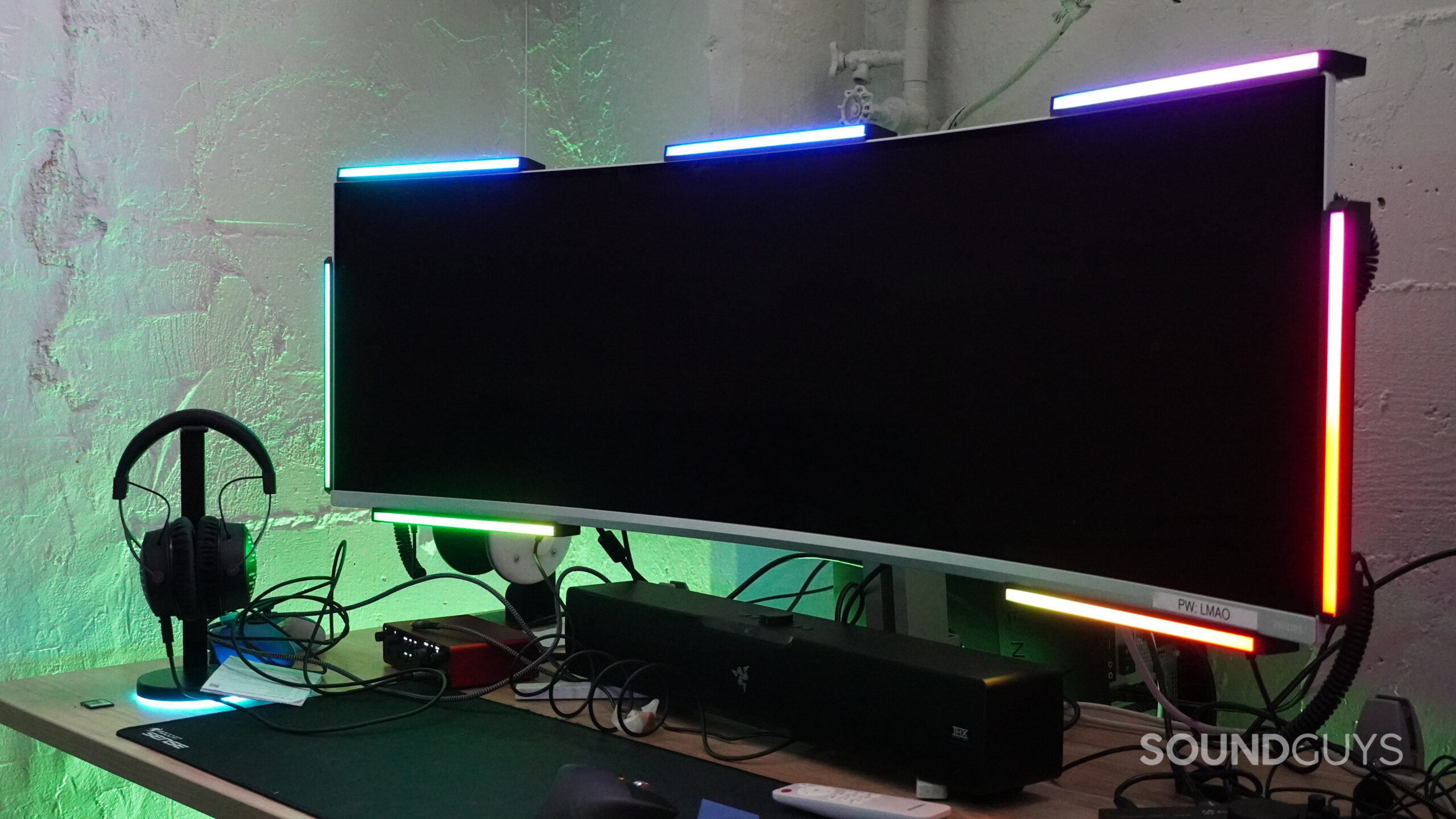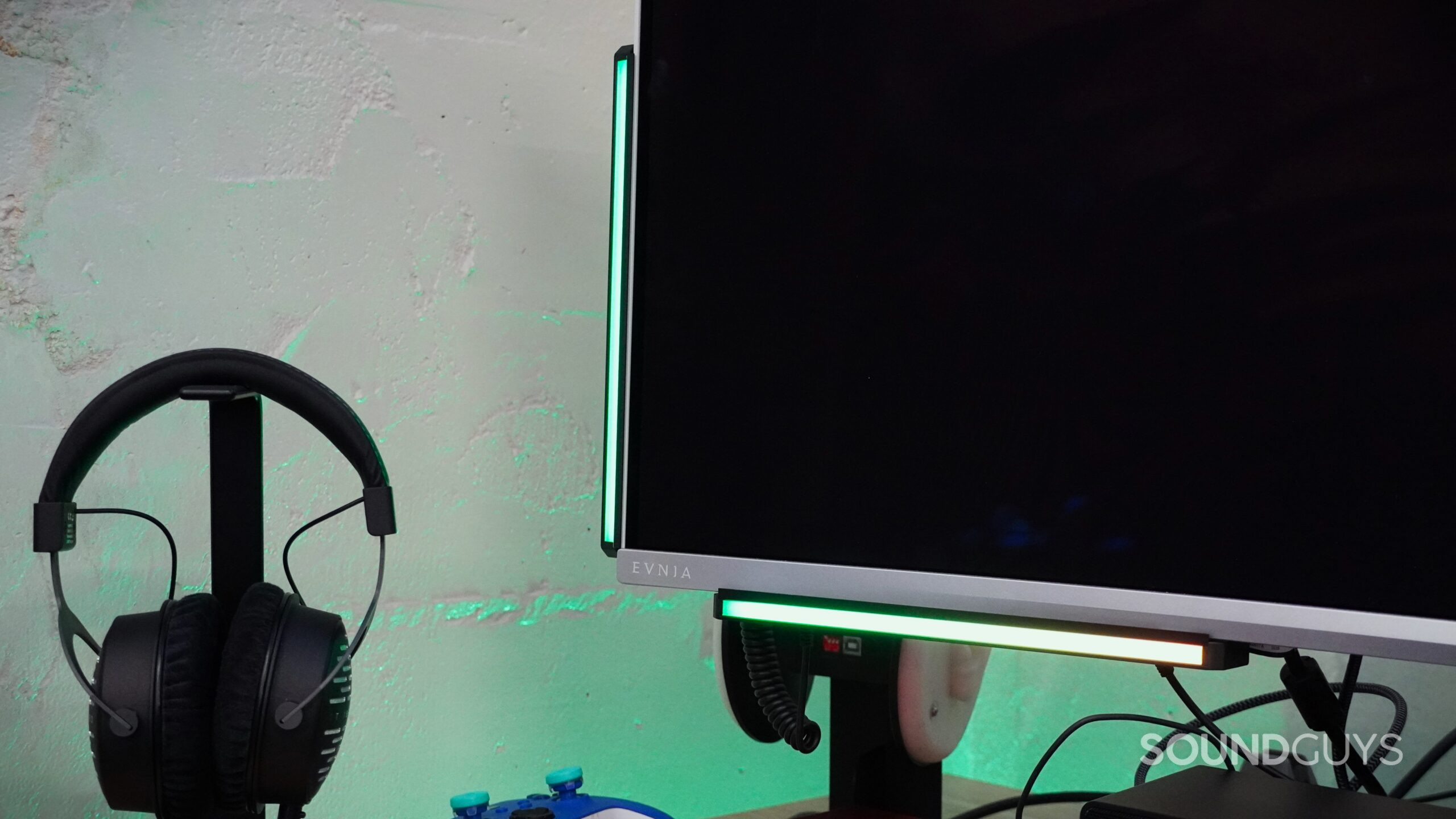All products featured are independently chosen by us. However, SoundGuys may receive a commission on orders placed through its retail links. See our ethics statement.

Audio Radar review: Leveling the playing field for hearing impaired gamers
Published onFebruary 20, 2025
Audio Radar
Gaming accessibility has made some commendable strides in recent years, but audio cues have remained a significant barrier for deaf and hard-of-hearing players. Some game developers, such as Naughty Dog, integrate advanced accessibility features like audio descriptions and haptic dialogue feedback, but many others overlook such considerations. Audio Radar aims to change that by transforming surround sound into sight regardless of what game or system you are playing on. But does it work, and is it worth it? I spent a few days using an Audio Radar kit to find out.
This article was published on February 20, 2025, and this is the first version of the article. Updates will follow as the market changes.
What I like about the Audio Radar
The Audio Radar makes an impressive first impression with its thoughtful design and implementation. It took me about 10 minutes to install the seven included RGBW light bars around my curved widescreen monitor despite the screen being rather thin. The command strips have stuck for a few days now, but I do worry they might lose their stickiness over time. Fortunately, plenty of extra command strips are included in case replacements are needed. Still, because the lights are straight, I found they fit more securely on standard flat displays and TVs and definitely not something like those fancy new bendable monitors from LG.
The light bars have a thoughtful design that translates spatial audio into precise visual cues.
The system’s core functionality—translating 7.1 surround sound into visual cues—works remarkably well. Each light bar represents a speaker channel, providing visual cues to complement spatial awareness. In testing, the directional indicators were invaluable in competitive games: green lights signaled distant sounds, while yellow and red indicated closer threats. This graduated color system provides crucial spatial awareness that hearing-impaired gamers have traditionally been denied.
The Audio Radar’s effectiveness varies across different game genres. In Call of Duty: Warzone, the system proved invaluable for detecting enemy footsteps and gunfire direction, giving me crucial seconds to react to flanking opponents. The red indicators immediately alerted me to close-range threats, while distant gunfights registered as subtle green pulses.
When playing Fortnite, the visual cues helped me track vehicles and building activity outside my field of view. However, in chaotic team fights, the lights occasionally became overwhelming with multiple audio sources triggering simultaneously.
For a different experience, I tested it with Dead by Daylight, where the Audio Radar truly shined. The killer’s proximity was clearly indicated through intensifying red lights, allowing for timely escapes that would have been impossible without the directional awareness normally provided by audio cues.
The command center offers impressive customization options. You can adjust everything from color schemes (particularly useful for colorblind gamers) to sensitivity levels for different directions. The ability to save presets makes it easy to switch between different games or preferences. My favorite is the fireplace setting—it creates a cozy ambiance when I’m not gaming. The inclusion of a “selfie mode” that creates a white ring light around the monitor to light your face is also a thoughtful addition that will appeal to Twitch streamers and content creators, as they won’t need to buy another light.
What I don’t like about the Audio Radar
My first gripe was discovering upon setup that the Audio radar requires two non-included HDMI cables to work. This feels like an oversight at this price point. While most console gamers will have one cable on hand from their system, needing to purchase an additional one adds to the already substantial near-$400 investment.
There's no voice chat for wired headphones, unfortunately.
Audio Radar works alongside headphones on Xbox and PS5 for added visual reinforcement. Setup requires a bit of adjusting console settings, and instructions are provided. If you use a corded headset, there is a 3.5mm audio jack on the control console itself, but it only supports listening; you won’t be able to talk through the headset. If you do want to use your gaming headset microphone or a wireless headset on a PC in conjunction with Audio Radar, you will have to install and use the third-party software Voicemeeter.
There is a slight learning curve to using the control module. I’m sure that privacy-minded users will appreciate that having a physical module eliminates the need to download any software, but I can’t help but think that if the mobile app allowed you to adjust things like color, brightness, and patterns would be quicker and more intuitive than clicking through buttons in specific sequences. Currently, the app is only for firmware updates and you must use the control module to navigate from left to right to customize up to three presets for idle mode, gaming, or streaming. There is a lot of control offered over lighting effects, and it can take some time to cycle through all the options (especially if you skip one by accident), which again is why I think a companion app could better present everything at a glance.
Should you buy the Audio Radar?

At $399, the Audio Radar isn’t just another accessory—it’s a transformative tool for accessibility, bridging the gap between sound and sight. Whether you’re deaf, hard of hearing, or a competitive gamer looking for an edge, it enhances spatial awareness in a meaningful way. Its ability to translate audio cues into visual signals makes FPS and survival games more immersive, while its broad compatibility with modern gaming systems and support for up to 8K@60Hz ensure it remains future-proof. For those who rely on visual cues in gaming, this isn’t just a luxury—it’s a necessity.
Audio Radar review: FAQs
If you’re deaf, hard of hearing, or a competitive gamer looking for enhanced spatial awareness, Audio Radar is absolutely worth it. It effectively translates surround sound into visual cues, making FPS and survival games more immersive. However, at $399, it’s a significant investment. If you need accessibility features and want a plug-and-play solution that works across multiple platforms, it’s one of the best options available.
An alternative is CanetisRadar, an open-source software available on GitHub. It emulates 7.1 surround sound and translates audio cues into on-screen visual indicators. Unlike Audio Radar, it’s software-based and requires a PC, but it’s free and customizable. The improved version (CanetisRadar-Improved) offers more flexibility in positioning the visual indicators. However, it lacks the hardware integration and full RGB lighting experience of Audio Radar.
